![LISM [Terrain Camera (TC), Multiband Imager (MI), Spectral Profiler (SP)]](image/img_tc_title_001_e.gif)
Three high-performance optical instruments (TC, MI, SP) are installed on KAGUYA.
- Terrain Camera (TC)
- Multi band Imager (MI)
- Spectral Profiler (SP)

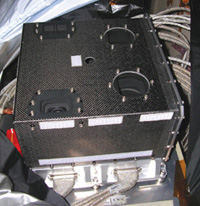
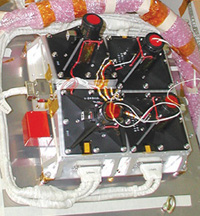
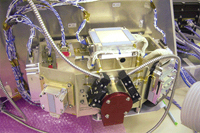
| TC | MI | SP | |
|---|---|---|---|
| Spatial resolution | 10m | VIS: 20 m, NIR 62m | 562 x 400 m |
| Field of view | Full mode : 22.4 degrees Nominal mode : 19.3 degrees Half mode : 9.65 degrees |
VIS:11 degrees (19.3km) NIR:11.2 degrees (19.6km) |
0.23 degrees |
| Spectroscopic method | Bandpass filter | Bandpass filter | Diffraction grating |
| Number of bands | 2(Stereo) | VIS : 5 NIR : 4 | 296 |
| Band width | 420 nm | 10-50 nm | 6-8 nm |
| Wavelength | 0.43-0.85 micrometer | VIS: 0.415・、0.75・、0.9 0.95・、1.0 micrometer NIR: 1.0・、1.05・、1.25, 1.55 micrometer |
VIS: 0.52-0.96 micrometer NIR1: 0.9-1.7 micrometer NIR2: 1.7-2.6 micrometer |
Both TC and MI are push-broom type imagers and continuously observe the lunar surface. For stereoscopic observation, TC has two telescopes with one-dimensional detectors looking at forward and backward directions, respectively. MI has two nadir-looking telescopes with two-dimensional detectors and bandpass filters to observe in nine different wavelengths.
SP is a spectrometer observing the lunar surface below the spacecraft and separate the light reflected at the surface in 296 wavelengths using two gratings.
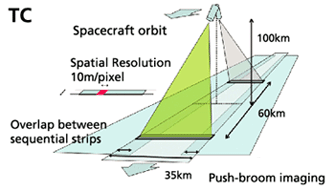
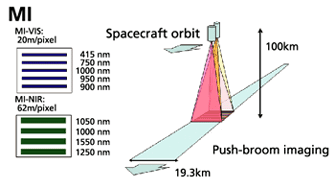
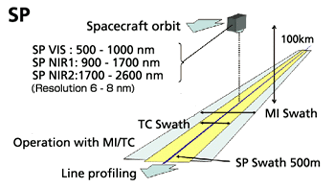
LISM will provide first precise topographic, geologic, and mineralogical information of the moon. For example, from LISM data at especially interesting areas such as crater central peaks, we can understand accurate rock and mineral distribution at those areas.
Quality of LISM data is better than previous lunar exploration satellite data in following points:
- First global topographic data using stereo images.
- Precise geologic unit information in higher spatial resolution of one order of magnitude using both of known and newly acquired color images.
- First direct mineralogical discrimination/identification from continuous reflective spectra.
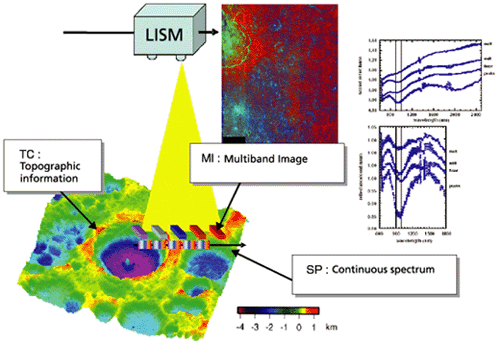

Jun'ichi Haruyama
Department of Planetary Science,
JAXA/ISAS
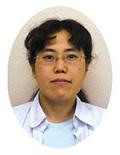
Makiko Ohtake
Department of Planetary Science,
JAXA/ISAS
Tsuneo Matsunaga
Office for Global Environmental Database,
NIES/CGER